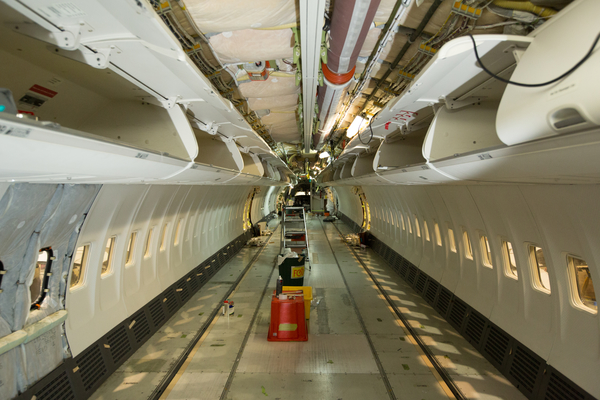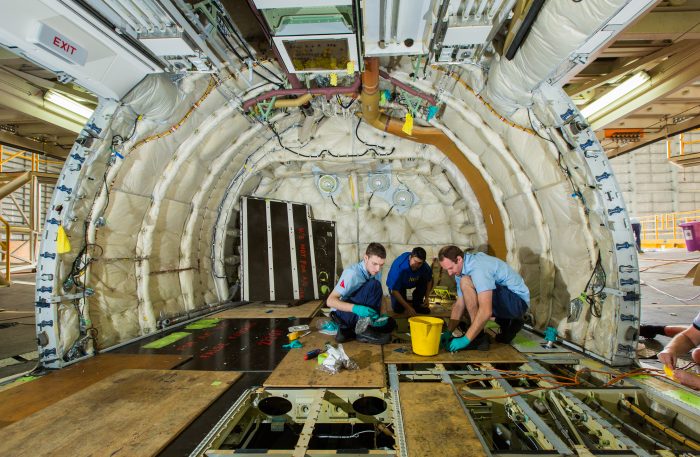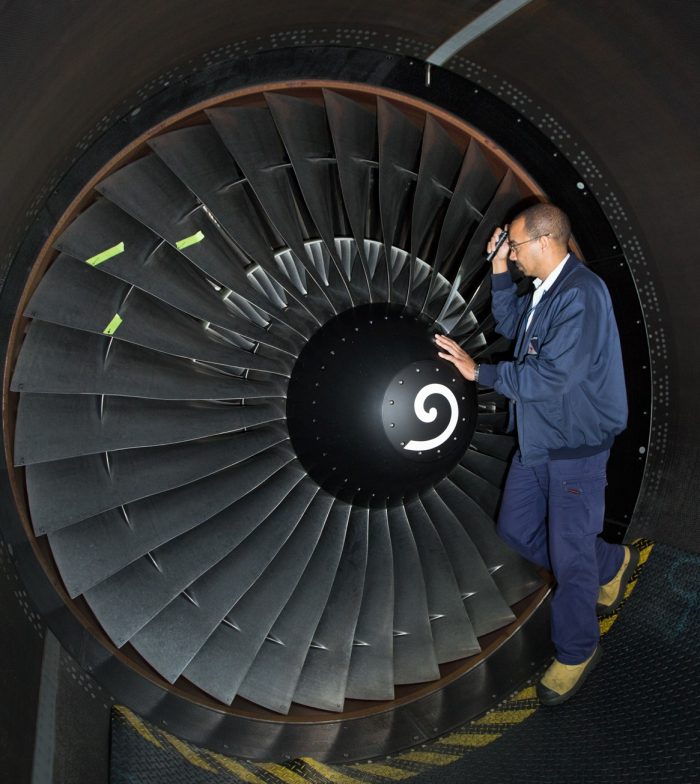
Inside an empty Boeing 737-800
It’s easy to forget when you board a modern jet aircraft that you’re stepping onto one of the most complex machines ever created. An A380, for instance, has over one million parts.
Today’s aircraft are carefully tuned machines with primary systems and backup systems (and, sometimes, backup, backup systems) in order to fly up to 16 hours non-stop without skipping a beat.
As you’d expect, making sure that our fleet of 200+ aircraft is operating smoothly is a big job. We’ve got more than 3300 people in the Qantas Engineering team based in Australia and in key ports around the globe who maintain them.
Actually, the origin of the term maintenance comes from the Latin “maintinum” – meaning to fix something before it stops working.
OK, not really. But that’s the basic principle behind the carefully planned services that an aircraft receives during its life, which could easily be more than 20 years. It’s a bit like the scheduled services for your car, except a lot more complicated.

Mind the gap – engineers work on an Airbus A330
The age of the aircraft, the number of hours it’s flown, the number of take-offs and landings, requirements by aviation regulators and our own policies determine when and what type of maintenance we do.
They are divided into three types of “checks” that bundle together hundreds of tasks – A Checks, C Checks and D Checks. (The B Check got absorbed into the others for more modern aircraft.)
Here’s a quick summary of what checks happen, when:
Line Maintenance
Inspecting things like wheels, brakes and fluid levels (oil, hydraulics) are done during transit checks. Plus, any running repairs that the aircraft tells us it needs through thousands of on-board sensors. Most aircraft would receive about 12 hours of line maintenance per week. These happen around the world and around the clock.
The A Check
Every eight to 10 weeks, filters will be changed, key systems (like hydraulics in the ‘control surfaces’ that steer the aircraft) will be lubricated and a detailed inspection of all the emergency equipment (like inflatable slides) is completed. A typical A Check on B737 takes between six and 24 hours.

An inspection of the fan blades of an A330 engine
Heavy Maintenance
Heavy maintenance happens every 18 months to six years depending on the aircraft type and age.
The C Check
Happens every 18 months to two years (depending on type of aircraft) and takes three weeks. We recently took the opportunity when a number of our A330s were undergoing C Checks to upgrade the cabin interior at our Heavy Maintenance Base in Brisbane. The same thing is happening with some of our B737s.
The D Check
This is also known as a C4 or C8 check depending on the aircraft type. This check is performed every six years and the entire aircraft is basically dismantled and put back together. Everything in the cabin is taken out (seats, toilets, galleys, overhead bins) so engineers can inspect the metal skin of the aircraft, inside out. The engines are taken off.
The landing gear is removed and overhauled with the aircraft supported on massive jacks. All of the aircraft systems are taken apart, checked, repaired or replaced and reinstalled. Each D Check costs several million dollars and takes about three to six weeks, but it’s almost like a brand new plane by the end of it.
Most of our heavy maintenance is done in Australia. We also have a dedicated hangar under construction in Los Angeles to take advantage of the time our aircraft spend on the ground over there. Some of our maintenance is done by organisations like Lufthansa Technik, which looks after many of the world’s A380s.
As technology improves, aircraft are being designed to need less maintenance. For instance, the Boeing B787 only needs a D Check every 12 years compared with every six years for older aircraft.
Check out the time lapse of an A330 being kitted out with a new cabin.